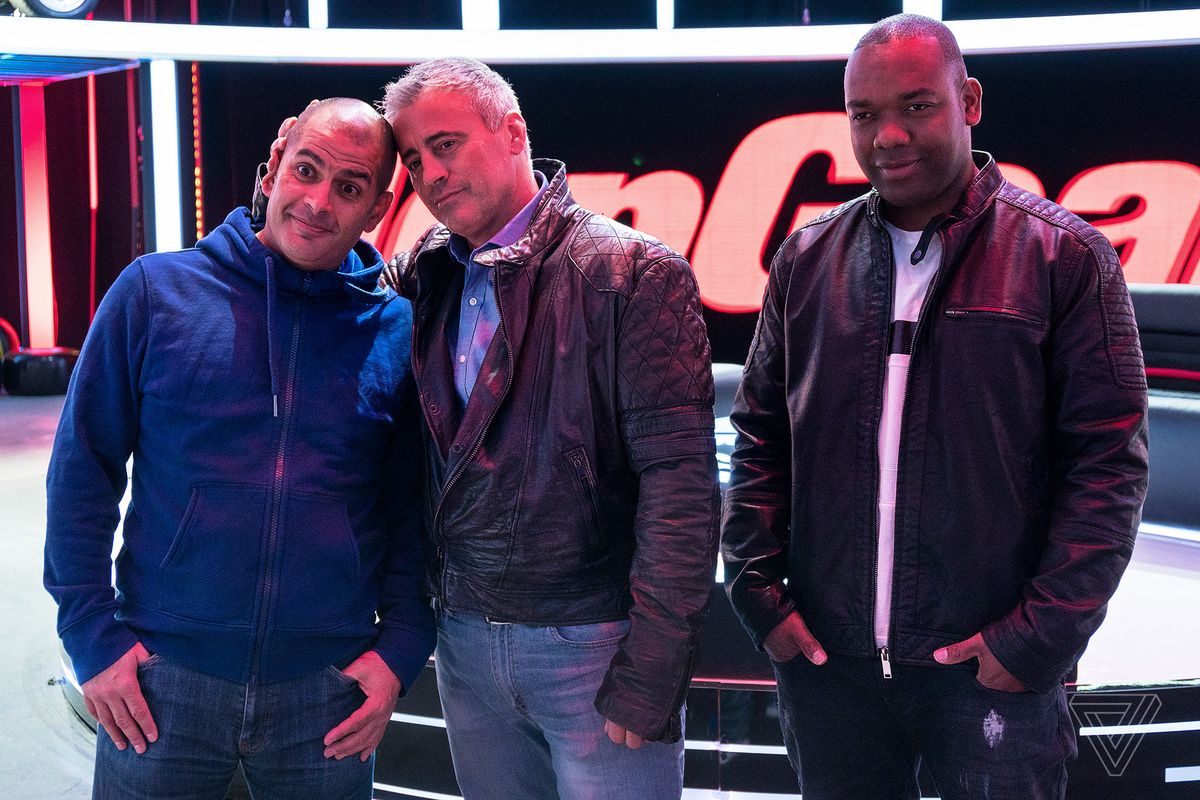/cdn0.vox-cdn.com/uploads/chorus_image/image/53744037/vsavov_160312_1502_0004.0.0.jpg)
On a windy, and eventually rainy, day last month, I got to experience something that my teenage self would have been very jealous of: I rode around the Top Gear test track, being expertly flung around its corners by show presenter Chris Harris. It was part of a press preview of the 24th season of Top Gear, and you can already get a taste for what that’s like from my colleagues’ roundtable discussion of the season opener last week.
But I’m not here to give away spoilers or specifics of the new season. In my time at the Top Gear facilities, I interviewed all three of the show’s presenters, and now I just want to tell you why I’m rooting for the newly rebooted Top Gear to succeed. Yes, Vlad is being a fanboy.
/cdn0.vox-cdn.com/uploads/chorus_asset/file/8110669/vsavov_160312_1502_0013.0.jpg)
- Chris Harris. The unabashed geek of the show, Chris Harris is in many ways the ideal car reviewer. His uncynical enthusiasm for cars is infectious, and he brings an encyclopedic depth of knowledge to Top Gear that I don’t think the show has ever had. The man can identify cars just by their engine noise, for crying out loud. At a time when popular culture seems impatient with real expertise, I’m delighted to have a true expert on TV from whom I can learn about cars and the joys of pushing them to their limits.
- Top Gear became pretty awesome last season, but few people noticed. We can all agree that Chris Evans was a poor replacement for Jeremy Clarkson in the lead presenter role of Top Gear season 23. He tried to be as loud and brash as Clarkson, but didn’t have the same level of camaraderie with his colleagues, and ultimately put audiences off from watching. I think the show’s producers grasped that fact quickly, and the latter half of season 23 ended up with more group driving adventures and fewer spots featuring Evans. As I observed at the time, the show became instantly more watchable, and with the promotion of Harris and fellow car journalist Rory Reid to more prominent roles, it’s only going to improve.
- The assholes are gone. There are many people who’ll tell you that the chemistry between Jeremy Clarkson, James May, and Richard Hammond — consisting primarily of them playing pranks and being rude to one another — was at the heart of Top Gear’s previous appeal. I disagree. There’s nothing particularly charming about the emotional immaturity of three men incapable of openly acknowledging their friendship and shared passion. When I watch that old trio, I’m transported back to my school days, where I had to say “fuck” every now and again to reassert my masculinity. The new crew, on the other hand, features two long-tenured car journalists and the son of a mechanic. Harris, Reid, and LeBlanc are more interested in the cars than self-promotion, and I find that refreshing.
- The production quality remains stellar. This is another aspect of Top Gear’s first post-Clarkson season that went unappreciated: season 23 was full of gorgeous footage that turned cars into kinetic art. I’m convinced that whenever Top Gear does finally run out of gas, its signature achievement will be one of cinematography and staging. That stuff, the good stuff, hasn’t dropped in quality one iota, and season 24 promises to keep the standard high. Many of the best gadget review videos produced by sites like The Verge and YouTubers like Marques Brownlee owe a creative debt to Top Gear’s innovation in this space. Top Gear took the format of a luxury watch commercial, replete with excruciatingly tiny details and an admiration of the most basic mechanics, and turned it into a way to showcase big and burly cars.
- We all need an escape from fighting. Have you looked at Twitter lately? A CNN news broadcast? A New York Times front page? How about the latest choice of blockbuster Hollywood movies? It seems like life today is characterized by polarization, argument, and conflict — whether it’s between sports teams, political ideologies, or superhero motivations. Even our favorite modes of escapism don’t really give us a chance to relax and calm down (I’m about the start the new Mass Effect, for example, and I don’t anticipate it will let me casually farm on a rural planet for 100 hours). So it’s a little bit awesome to get a show on TV that has no villainy, that requires no obligatory two-minute hate for the bad guys. Top Gear is an indulgence. Everyone in it is on the good team, everyone has a common interest and fascination, and, except for the danger of overactive script writers, everyone just gets along harmoniously.
/cdn0.vox-cdn.com/uploads/chorus_asset/file/8110675/vsavov_160312_1502_0002.0.jpg)
As Matt LeBlanc put it to me, his job is to drive the cars not being driven, and to recount the tales of those experience. His top priority at the show — after not crashing the cars — is to be honest. As a technology reviewer, I can’t help but relate to that ambition. When I speak to Chris Harris, I get the sense of a kindred spirit, a person who’s passionate about his subject matter and about doing it justice. And Rory Reid is someone I used to hang out with at the Geneva Motor Show, gawking at the latest Ferraris and Lamborghinis. So you can say I’m partial to this trio. In person, they convey a humility and seriousness about their jobs that was never apparent with their predecessors. But even without them, Top Gear is still the best and prettiest stage for car enthusiasm on TV, and well worth watching.
In the US, Top Gear airs on Sundays at 8/7c on BBC America.
Photography by Vlad Savov / The Verge
[“Source-theverge.”]




